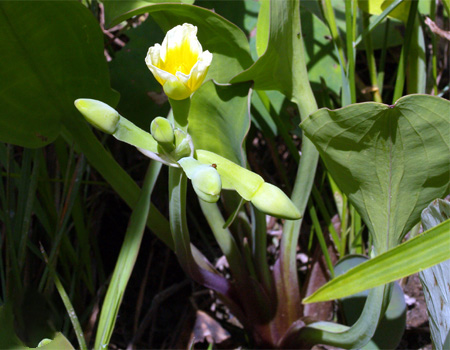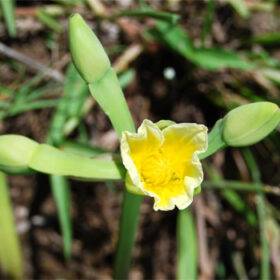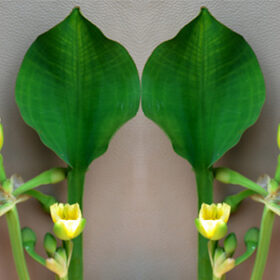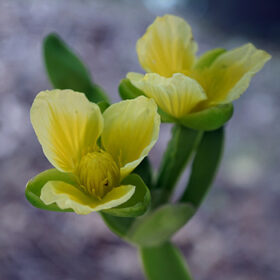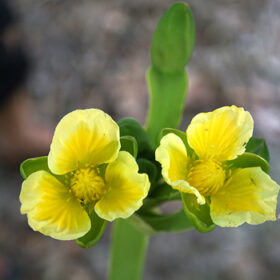Identification:
The plant is characterized by a rhizome that grows underground, producing multiple shoots for new plant growth. Leaf sheaths above the ground form a pseudostem. Mature plants typically reach a height of 45-60 cm and a maximum depth of approximately 15 cm. It has a fibrous root system that develops in soft, muddy soil. The rhizome is thick and short. The plant thrives in marshes, shallow water, and stagnant areas, with a maximum water depth of 15 cm. When grown in pots, the soil should be rich in humus. The leaves are erect and upward-facing, not floating on the water surface, and usually taller than the flower stalks. Leaves have an ovate to round shape (5-30 x 4-25 cm), are a vibrant green color, and have curved primary veins. The leaf stalks are long and sheathing (10-75 cm), spongy (containing air), and possess a triangular cross-section with three ridges. Leaf blades exhibit variable shapes, ranging from lanceolate to elongated elliptical or broadly oval. The leaf tips are abruptly pointed, becoming thinner at the apex, with slightly curled edges and wavy margins. There are 4-6 pairs of longitudinal veins that are nearly parallel and converge towards the tip, along with numerous transverse veins that are parallel and perpendicular to the longitudinal veins and the central vein, forming a fine reticulate network.
Flowers:
Inflorescences are umbel-like, with long-stalked, bright yellow flowers, with 1-4 flower stalk clusters. Each flower cluster contains 2-12 flowers enclosed within bracts. The flower stalks are small, with an expanded upper portion and a triangular cross-section. Each flower has 3 petals, ranging in color from pale yellow to bright yellow, with a broadly oval or round shape, bearing 15-20 stamens (1.2 cm long) and numerous ovules.
Fruits:
Small fruits (1.5-2 cm in diameter) are enclosed by the calyx. This plant reproduces through seeds and expands its population through asexual reproduction.
Habitat and Ecology:
This is an aquatic plant that thrives in marshy soils, wet mud, shallow ditches, and canals found in the Eastern and Southwestern provinces.
Distribution:
Originally from the Americas, it was introduced to Southeast Asia in the early 20th century and became a weed in rice paddies in this region. Currently, it is distributed in Southeast Asia and the Americas.
In Vietnam, it appears throughout the country and grows wild as a weed in wetlands of the Mekong Delta.
Uses:
The plant is primarily cultivated for ornamental purposes along the edges of ponds in parks. It is occasionally used as a food source.
This plant, considered a type of wild vegetable, has become a distinctive feature in the culinary culture of the Mekong Delta.

